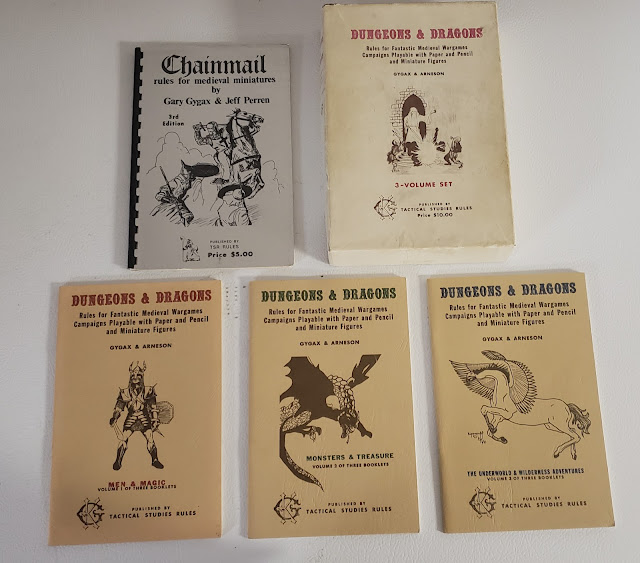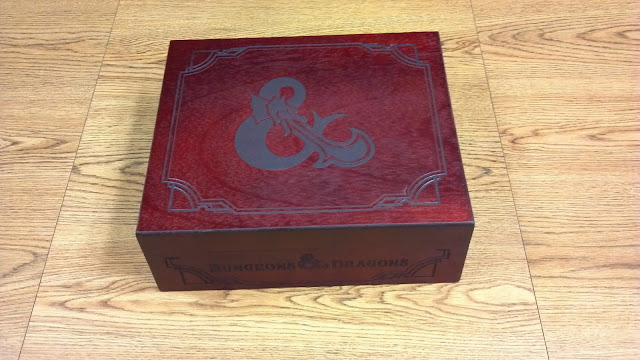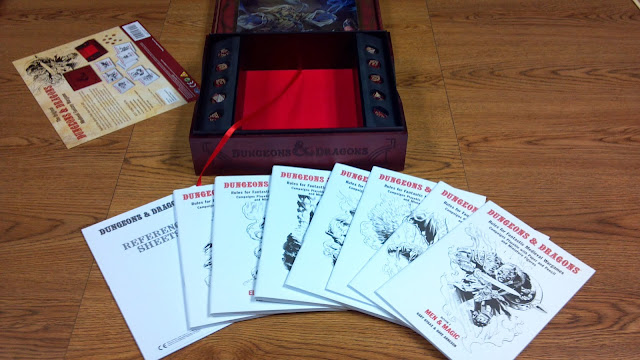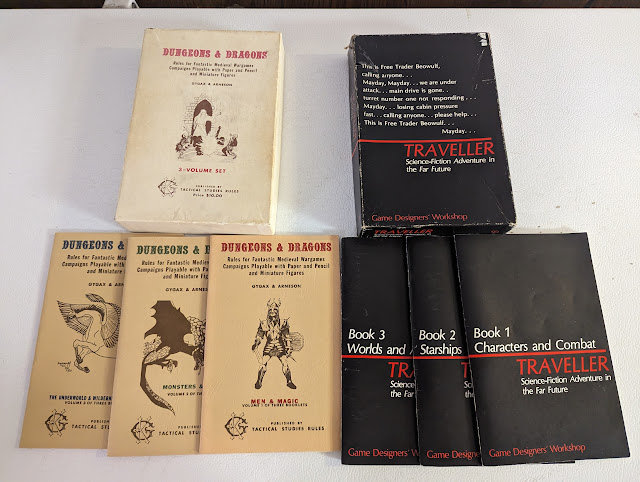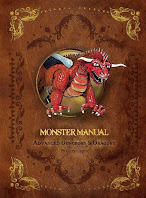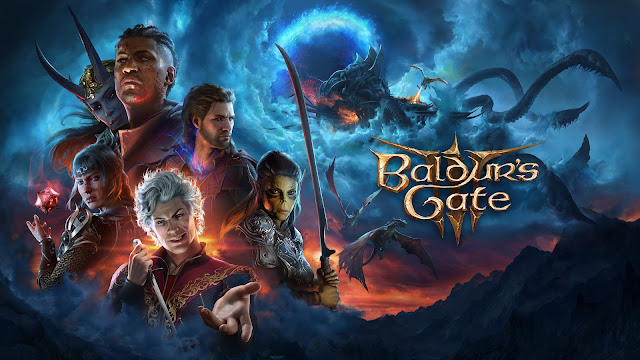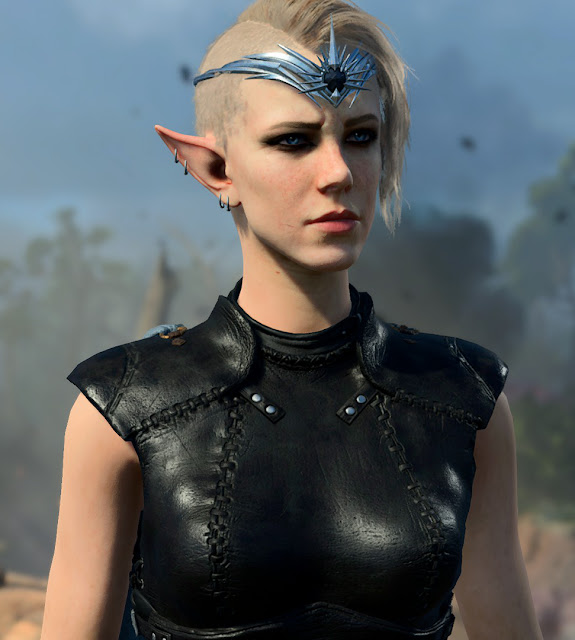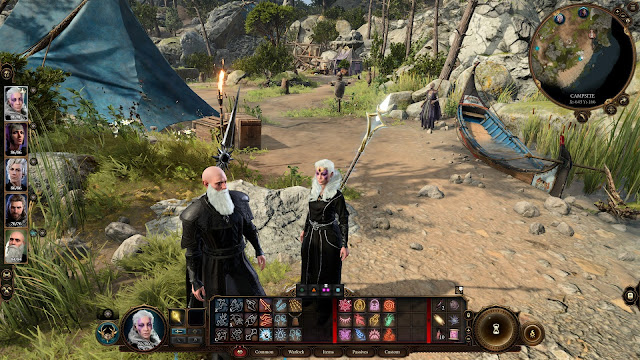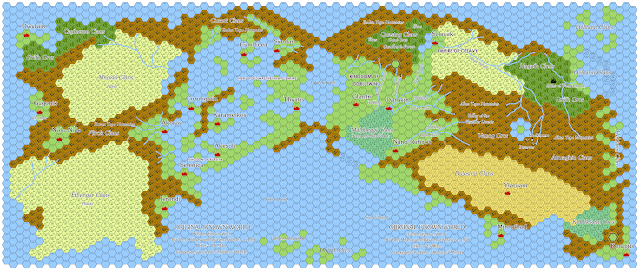 Cepheus Deluxe: Enhanced Edition
Cepheus Deluxe: Enhanced Edition is a Science Fiction roleplaying game with a long history. If
Dungeons & Dragons has its own Systems Reference Document containing guidelines for publishing content under the Open-Gaming Licence, then so does
Traveller, the classic Science Fiction roleplaying game inspired by Imperial Science Fiction, published by Game Designer’s Workshop in 1977. This is the
Cepheus Engine System Reference Document, which contains the ‘Classic Era Science Fiction 2D6-Based Open Gaming System’, which provides a common framework for Referees to create and run, and players roleplay, whether for their own table or for actual publication. This is a roleplaying game which enables the Player Characters to travel the stars, explore new worlds, engage in speculative trade, conduct small scale military missions, fight off pirates preying on interstellar trade, investigate strange alien ruins, and more.
Cepheus Deluxe: Enhanced Edition is published by
Stellagama Publishing, best known for the campaign setting,
These Stars Are Ours!. It is an update and expansion of earlier versions of the rules. The changes include the inclusion of the hexadecimal notation system beloved of
Traveller being optional; combining skill and characteristic modifiers—which means that the target thresholds for actions are higher; Player Character is less random and a Player Character cannot die during the process, although he can be injured; damage suffered by Player Characters and NPCs is not deducted from characteristics, but from Stamina and Lifeblood, instead; Player Characters have Traits, heroic abilities which makes them stand out; spaceships can be larger—ten thousand, rather five thousand tons—and can be equipped with main guns, like Particle Guns and Gravitic Disruptors; technology is shifted up and down slightly, so that Cybertechnology can be available at Tech Level 9 and Force Shields at Tech Level 16; Player Characters can suffer mortal wounds instead of dying and can even undergo Cyborg Conversion or Bio-Reconstruction; and a section for the Referee has been added. There are innumerable changes and additions throughout
Cepheus Deluxe: Enhanced Edition, but they are compatible with previous editions of the Cepheus roleplaying game.
Cepheus Deluxe: Enhanced Edition is upfront about these changes, but in addition, throughout the rulebook, the Referee is given options that she can include in her campaign.
A Player Character in the
Cepheus Deluxe: Enhanced Edition has six characteristics—Strength, Dexterity, Endurance, Intelligence, Education, and Social Standing. These typically range between two and twelve, but can go much higher. Then a Player Character has skills. These range from Admin, Airman, and Athletics to Tactics, Watercraft, and Zero-G. Notable omissions are the Mechanics and Electronics skill, replaced by repair, Admin includes the Advocate skill, and Gambling is part of Carousing. Skills range in value from zero to five, and are gained from a Player Character’s Homeworld and his Career. He also gains one or more Traits, depending on the length of that Career. These are tied to particular skills, so for example, ‘Jump Tuition’ requires Piloting 1 as a skill and allows the Player Character to roll with Advantage when making a Jump throw and travel faster-than-light, whilst ‘Explorer’s Society’ grants a high passage ticket once every two months and free stay at the society’s hotels.
To create a Player Character, a player assigns an array of values to the Player Character’ characteristics. He chooses one skill for his character’s Homeworld and then puts him through a Career. There are twelve of these, and include Agent, Belter, Colonist, Elite, Navy, Pirate, Rogue, Scholar, and more. A career lasts a number of terms, each four years in length—though an option allows for their length to be random—and a player picks skills as he takes his character from one term to the next, learning fewer skills as he ages. Once per turn, the player can also choose to give up a skill option and instead increase a characteristic. There is also the chance of suffering from the effects of age, but the main thing that the player will be rolling for is an event each term. This creates an incident which the Player Character can gain from or suffer because of it, and it can be career-related or it can be life-related. At the end of the Career , a Player Character will gain mustering out benefits in terms of money, items, ship’s shares, and characteristic bonuses. In extreme situations, a Player Character will find himself being trained in psionics or being sent to prison!
Using the Event Tables allows a player to create a bit of background about his character. For example, this belter grew up on an inhospitable colony before signing on with a mining concern to strike it rich. He never did, but he was sponsored for university and trained in the sciences and technical subjects. After nearly getting injured during an attack on the company facilities, he decided to retire, believing he had sufficient skills to go it alone and look for his own strike.
Karol Stounten
Strength 4 Dexterity 6 Endurance 7 Intelligence 11 Education 11 Social Standing 8
Career: Belter, 4 Terms Rank: Crew Boss
Stamina: 7 Lifeblood: 7
Age: 34 Homeworld: Inhospitable Outpost
Events: Pirate Protection Racket (Resisted), Study, Specialist Training, Cyberterrorism!
Skills: Athletics-0, Computer-2, Demolitions-1, Engineering-1, Melee Combat-1, Piloting-2, Repair-1, Science-3, Streetwise-1, Zero-G-1
Traits: Sensor Ace, Scientist (Physical Sciences)
Equipment: Spacesuit, CR 10,000 Prospector
Mechanically,
Cepheus Deluxe: Enhanced Edition is simple. For a Player Character to undertake an action, his player rolls two six-sided dice and aims to beat a target number, typically eight or more, for an average difficulty task. The player will add modifiers for the characteristic and the skill being used, a skill rating of two indicating that the Player Character is a trained professional and an experienced professional if three or more. A roll of twelve always succeeds, and sometimes, a situation will give the Player Character Advantage, enabling his player to roll three six-sided dice and use the best two. This is usually due to a Player Character trait. The amount by which the roll exceeds or misses the Target Number is called the Effect. Effect itself is not clearly explained, although there are numerous uses for it throughout the book, such as increasing the damage by a successful attack or the captain aboard a starship in combat using Leadership to ‘Lead Crew’ and create bonuses that his player can assign to the other crew members.
As a Science Fiction roleplaying game,
Cepheus Deluxe: Enhanced Edition provides a wide range of equipment. This includes armour, exploration and survival gear, arms, armour, and cybernetics. The latter is classified into four grades, which start with A-Grade, superficial or common implants, such as cosmetics or an Internal OmniComp, all the way up to R-Grade cybernetics, invasive, experimental, and irreversible implants like a Berserker Module or a Hercules Frame Replacement. Every cybernetic implant has a point cost. If a Player Character has more than six points worth of Cybernetic Points, he suffers from cyber-disassociation, which will affect his ability to socialise. The weapons include vibroblades, gyrojet guns, tanglers, blasters and laser guns, and even a grav launcher that fires a floating plasma bomb that the user can guide to the intended target. A solid selection of vehicles is included too, as well as a quick and dirty robot design sequence, which allows them to be created in a few minutes, alongside a few examples, ready to be used in play.
The rules for combat allow for cover, aiming, automatic weapons, suppressive fire, grappling, morale, and more. If a combatant suffers more damage than his Dexterity characteristic, he is knocked prone. Damage is deducted from Stamina first, and then Lifeblood, the latter indicating that he has been wounded. If it is less than half his Lifeblood, he is seriously wounded. He is mortally wounded if it is reduced to zero. There are rules for trauma surgery and recovery. The rules for chases cover both foot chases and vehicle chases. Psionics are handled in a straightforward fashion, possible talents consisting of Awareness, Clairvoyance, Telekinesis, Telepathy, and Teleportation. What talents a Player Character might have are determined randomly, but at the very least, he will have Telepathy. His Psionic Strength, essentially an extra characteristic, determines the number of PSI points he has and the abilities he has within a talent. In order to use a psionic ability, he simply spends the PSI points.
Understandably, the longest section in the longest section in
Cepheus Deluxe: Enhanced Edition is devoted to starships. Spacecraft below one hundred tons are smallcraft and do not have a Jump Drive. Interstellar travel is achieved by the aforementioned Jump Drive, rated between one and six, indicating how many parsecs a starship can travel in a single jump. Speed within a system is measured in gees, again from one to six. The rules begin by explaining how starships are operated and the costs of doing so, including speculative trade in terms of cargo and passengers. The procedure for the latter is explained and there are suggestions too, on how to make the ferrying of cargoes more interesting. There is a similar procedure for designing spaceships and starships, all the way up to hulls displacing ten thousand tons. The latter enables the creation of large vessels and arming at that scale with large weapons that fit in triple turrets and bay weapons that displace fifty tons, and even main gun weapons that displace one thousand tons. In general, these are outside of the scope of most campaigns that a Referee might run, but their inclusion allows the possibility of a big, naval-based campaign. The procedure is the most complex in
Cepheus Deluxe: Enhanced Edition, involving as it does quite a lot of decisions and arithmetic. The process does take a bit of practice to get right and get the numbers to balance. Numerous common spacecraft designs are included too, from a ten-ton fighter and ten-ton gig, all the way up a thousand-ton cruiser. Most of the vessels that will be within the purview of the Player Characters include the two-hundred-ton trader, one-hundred-ton scout vessel, and so on.
Spaceship combat is similarly complex. It is conducted in six-minute rounds which allow for weapon recharge cycles, the distances that missiles have to travel to reach their targets, the time needed for repairs, and so on. In that period, each crew member has time to take a single action. For the captain, that will be to ‘Lead Crew’ to orders, and more importantly, possible bonuses, or to ‘Outmanoeuvre’ the enemy and gain a better Position in relation to them; the Pilot has a choice of Attack Vector, Disengage, Evasive Manoeuvres, Plot Jump, and more; the Sensor Operator can Spoof Missiles, Jam Sensors, Target Systems, gain a Sensor Lock, or Break a Sensor Lock; the Gunner can Fire Energy Weapons, Launch Missiles, Launch Sand (which screens against attacks), or fire Point Defence weaponry; and the Engineer can Overcharge weapon or Redline Engines, or conduct jury-rigged repairs. It starts with attempting to gain Position over the enemy, this replacing what would be Initiative or Range in ground or air combat, as there is neither in space in
Cepheus Deluxe: Enhanced Edition. Combatants can target specific locations on a spaceship, and if an attack does get through and hit an enemy vessel, it can inflict surface, internal, or critical damage. Internal and critical hits can damage or destroy specific components or locations aboard a vessel. The rules also allow for radiation damage too. Overall, the rules are busy and detailed—but not overly so, and they do work to keep every Player Character aboard a ship busy and useful in a fight.
The rules for world creation remain unchanged. The procedure enables the Referee to roll for the various factors which make up a world—size, atmosphere, water percentage, world government, law level, starport, and tech levels. All these will together indicate trade codes and the presence of bases, whilst the Referee determines what travel zone the world lies and what allegiances it has, if any, plus communication and trade routes. The procedure is straightforward and much less complex than the rules for either starship combat or design. In addition, there are rules and tables for social encounters, detailing NPCs, plus some sample generic stats, plus a guide to creating and running animals or xenofauna. This is perhaps the shortest section in the rulebook.
One new section specifically for the Referee provides her with a range of advice. This is broad in its coverage, its primary suggestion being for the Referee to start small with a handful of worlds and build as her players and their characters begin to explore the setting. There is advice on using contacts, enemies, and so on, as to what to allow or terms of technology since
Cepheus Deluxe has a high number of baked-in features. These start with no Faster-Than-Light communication, slow interplanetary and interstellar travel, physical rather than virtual activity, and so on. The Referee is further supported with six detailed adventure seeds and then several appendices. These include a bibliography, options for using the ‘UWP’ or ‘Universal World Profile’, cyborg conversion or bio reconstruction to avoid death, and options for aliens. In general,
Cepheus Deluxe is a humanocentric setting, but it is also a Science Fiction rules set, so rules for creating NPCs or Player Characters from alien species are almost obligatory. There are three given here, the Greys, the Reptiloids, and the Insectoids.
Lastly,
Cepheus Deluxe: Enhanced Edition does include what every player and Referee wants for their Science Fiction roleplaying game—starship floor plans. Presented in ‘Appendix F: Schematics’—and not Appendix ‘F’ for ‘Floor Plans’, these accompany the full stats given for various spaceships earlier in the book, including an Assault Ship, Explorer, Prospector, Research vessel, Scout, and System Defence Boat. Many have a rocket-like quality to them, landing on their ends and having multiple small decks rather than fewer, but larger decks. However, they separated from their stats, and worse, they produced far too small to use with any ease.
Throughout
Cepheus Deluxe: Enhanced Edition the Referee is constantly given two things. The first is options. For example, the ability to increase characteristic value once play starts; Hero Points to allow rerolls by both the players and the Referee; letting Player Characters switch Careers; allowing dodging and parrying in combat; armour as a penalty to hit rather than absorbing damage; heroes and grunts in combat for more cinematic play; and more. They lessen in number towards the end of the book, but they provide the Referee with numerous choices if she wants to tweak her
Cepheus Deluxe game.
The second thing that
Cepheus Deluxe: Enhanced Edition provides the Referee with, is examples. Examples of Player Character creation, combat, chases, starship combat, and so on. In some cases, more than one example, there being three examples of Player Character creation and two of combat, plus the examples of starship combat is lengthy and detailed, enabling the Referee to understand how the procedure works. In each and every case, they help to bring the rules to life.
What the
Cepheus Deluxe: Enhanced Edition does is shift the ‘Classic Era Science Fiction 2D6-Based Open Gaming System’ away from its
Traveller origins, and through that, any association with Imperial Science Fiction and specifically the Third Imperium, the setting for
Traveller. However, the problem with that, is where it leaves
Cepheus Deluxe, because it is not quite truly a generic Science Fiction roleplaying because its underlying architecture is still that of
Traveller. This is not to say that
Cepheus Deluxe could not do other types of Science Fiction. It could—and that includes many of the sources of inspiration listed in the roleplaying game’s Appendix A, such as
The Expanse,
Babylon 5,
Dark Skies, and
Outland. However, advice on adapting or adjusting
Cepheus Deluxe to the possible subgenres of Science Fiction it could encompass, for example, Biopunk, Cyberpunk, Dieselpunk, Military Science Fiction, Space Opera, Space Western, would have been both very welcome and expanded its utility.
In some ways, this is not helped by the underwhelming treatment of alien races, either as NPCs or Player Characters. The inclusion of the three in the Appendix D feels like an afterthought. Here perhaps rules for the Referee to create her own would not have gone amiss, again, expanding the utility of
Cepheus Deluxe. The inclusion of this and a more detailed examination of other genres would have made the
Cepheus Deluxe: Enhanced Edition a better toolkit. Perhaps there is scope here for a
Cepheus Deluxe Companion with tools, options, and essays to expand on this?
Physically,
Cepheus Deluxe: Enhanced Edition is disappointing. For the most part, the layout is clean and tidy, but it does need an edit in places. Worse, the artwork is often garish and simplistic, really failing to depict the tone of the roleplaying game’s Science Fiction. Conversely, the spaceship illustrations are excellent, though small.
Cepheus Deluxe: Enhanced Edition is ultimately a passport to the Classic Era Science Fiction ‘Classic Era Science Fiction 2D6-Based Open Gaming System’. It presents and supports the
Cepheus engine in a thoroughly accessible and—for the most part—supported fashion, especially with the engaging examples of play, providing the Referee with the tools to create her own content and use content available from other publishers.
 Name: Hail To The KingPublisher: Chaosium, Inc.
Name: Hail To The KingPublisher: Chaosium, Inc.







